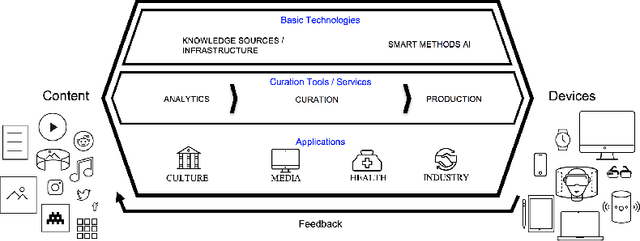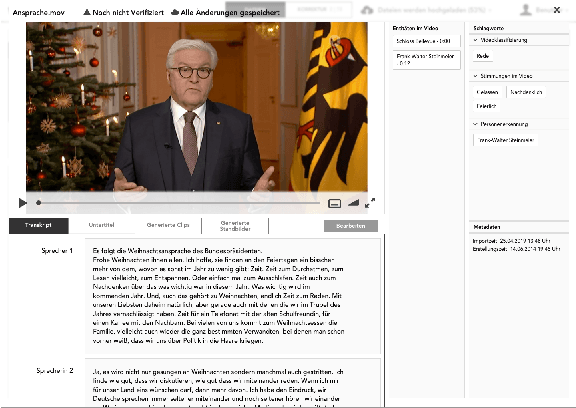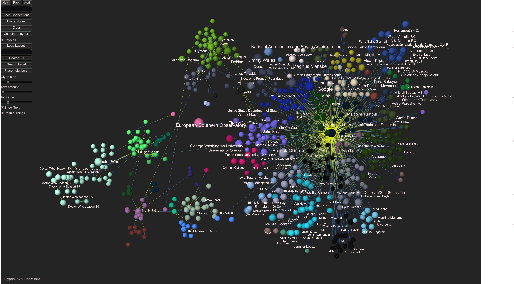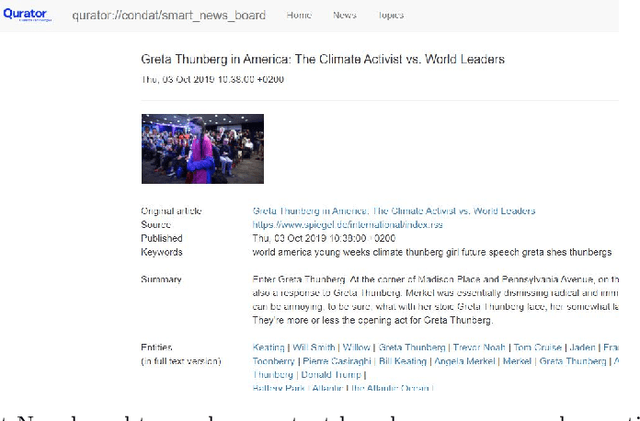Peter Bourgonje
QURATOR: Innovative Technologies for Content and Data Curation
Apr 25, 2020



Abstract:In all domains and sectors, the demand for intelligent systems to support the processing and generation of digital content is rapidly increasing. The availability of vast amounts of content and the pressure to publish new content quickly and in rapid succession requires faster, more efficient and smarter processing and generation methods. With a consortium of ten partners from research and industry and a broad range of expertise in AI, Machine Learning and Language Technologies, the QURATOR project, funded by the German Federal Ministry of Education and Research, develops a sustainable and innovative technology platform that provides services to support knowledge workers in various industries to address the challenges they face when curating digital content. The project's vision and ambition is to establish an ecosystem for content curation technologies that significantly pushes the current state of the art and transforms its region, the metropolitan area Berlin-Brandenburg, into a global centre of excellence for curation technologies.
Towards Discourse Parsing-inspired Semantic Storytelling
Apr 25, 2020



Abstract:Previous work of ours on Semantic Storytelling uses text analytics procedures including Named Entity Recognition and Event Detection. In this paper, we outline our longer-term vision on Semantic Storytelling and describe the current conceptual and technical approach. In the project that drives our research we develop AI-based technologies that are verified by partners from industry. One long-term goal is the development of an approach for Semantic Storytelling that has broad coverage and that is, furthermore, robust. We provide first results on experiments that involve discourse parsing, applied to a concrete use case, "Explore the Neighbourhood!", which is based on a semi-automatically collected data set with documents about noteworthy people in one of Berlin's districts. Though automatically obtaining annotations for coherence relations from plain text is a non-trivial challenge, our preliminary results are promising. We envision our approach to be combined with additional features (NER, coreference resolution, knowledge graphs
A Workflow Manager for Complex NLP and Content Curation Pipelines
Apr 16, 2020

Abstract:We present a workflow manager for the flexible creation and customisation of NLP processing pipelines. The workflow manager addresses challenges in interoperability across various different NLP tasks and hardware-based resource usage. Based on the four key principles of generality, flexibility, scalability and efficiency, we present the first version of the workflow manager by providing details on its custom definition language, explaining the communication components and the general system architecture and setup. We currently implement the system, which is grounded and motivated by real-world industry use cases in several innovation and transfer projects.
Abstractive Text Summarization based on Language Model Conditioning and Locality Modeling
Mar 29, 2020



Abstract:We explore to what extent knowledge about the pre-trained language model that is used is beneficial for the task of abstractive summarization. To this end, we experiment with conditioning the encoder and decoder of a Transformer-based neural model on the BERT language model. In addition, we propose a new method of BERT-windowing, which allows chunk-wise processing of texts longer than the BERT window size. We also explore how locality modelling, i.e., the explicit restriction of calculations to the local context, can affect the summarization ability of the Transformer. This is done by introducing 2-dimensional convolutional self-attention into the first layers of the encoder. The results of our models are compared to a baseline and the state-of-the-art models on the CNN/Daily Mail dataset. We additionally train our model on the SwissText dataset to demonstrate usability on German. Both models outperform the baseline in ROUGE scores on two datasets and show its superiority in a manual qualitative analysis.
Enriching BERT with Knowledge Graph Embeddings for Document Classification
Sep 18, 2019



Abstract:In this paper, we focus on the classification of books using short descriptive texts (cover blurbs) and additional metadata. Building upon BERT, a deep neural language model, we demonstrate how to combine text representations with metadata and knowledge graph embeddings, which encode author information. Compared to the standard BERT approach we achieve considerably better results for the classification task. For a more coarse-grained classification using eight labels we achieve an F1- score of 87.20, while a detailed classification using 343 labels yields an F1-score of 64.70. We make the source code and trained models of our experiments publicly available
 Add to Chrome
Add to Chrome Add to Firefox
Add to Firefox Add to Edge
Add to Edge